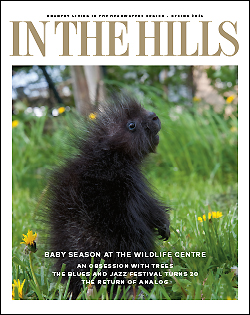Burls and Trees on Stilts
The reasons burls grow on trees are still not fully understood, but infection by viruses, fungus and bacteria are likely causes.
The spring and summer woods has abundant stories to tell – of birds, wildflowers, insects and much more. The winter woods is quieter, but it too has stories. Stories that emerge after the wonderful biotic clamour of the warm months has been muted. Not surprisingly, trees are the source of many of these winter tales.
Before reading on, look at the first two photos below and think about the “why” behind the unusual structure of the trees. They are supported by a network of stilt-like aerial roots. How did these forms arise?
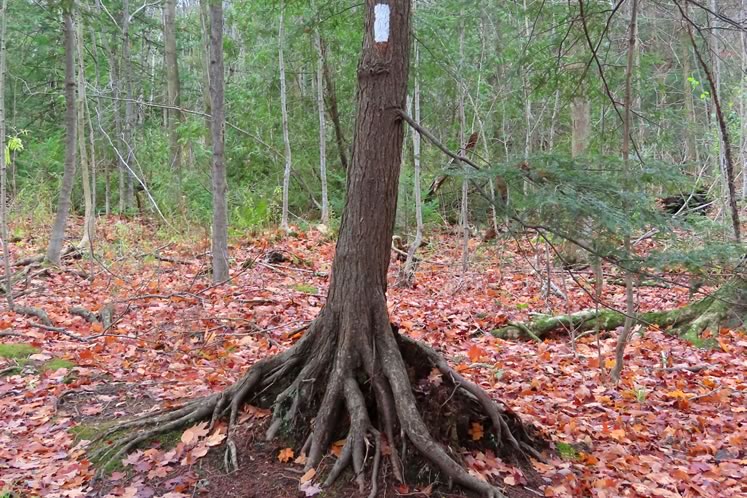
Hemlock growing on an old stump. Photo by Don Scallen.
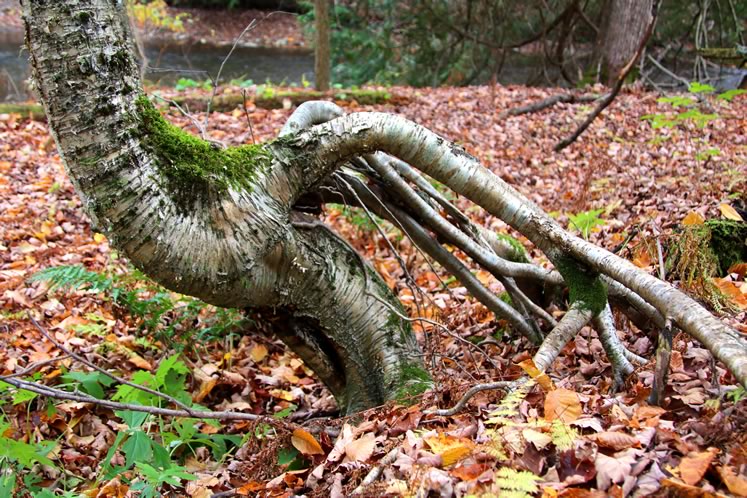
Yellow birch. Photo by Don Scallen.
These trees, hemlock and yellow birch, sprouted years ago atop the trunks of other trees. In their early years the little trees sank roots deep into the decaying trunks, eventually reaching the earth below. When the trunks decayed entirely, the roots of the birch and hemlock were left exposed above ground.
Birch seedlings often grow best on logs or stumps where they aren’t smothered by the leaf litter of the forest floor. The deaths of older trees gives them life.
Another tree story is told by the growths pictured below. These are “burls”. The massive burl is growing on sugar maple, the smaller on red oak. The reasons burls grow on trees are still not fully understood, but infection by viruses, fungus and bacteria are likely causes.
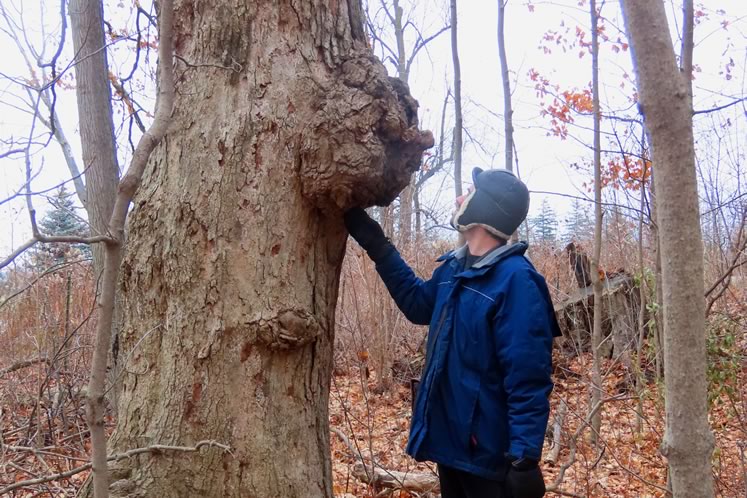
Trees can host multiple burls and still lead long, robust lives. Photo by Don Scallen.
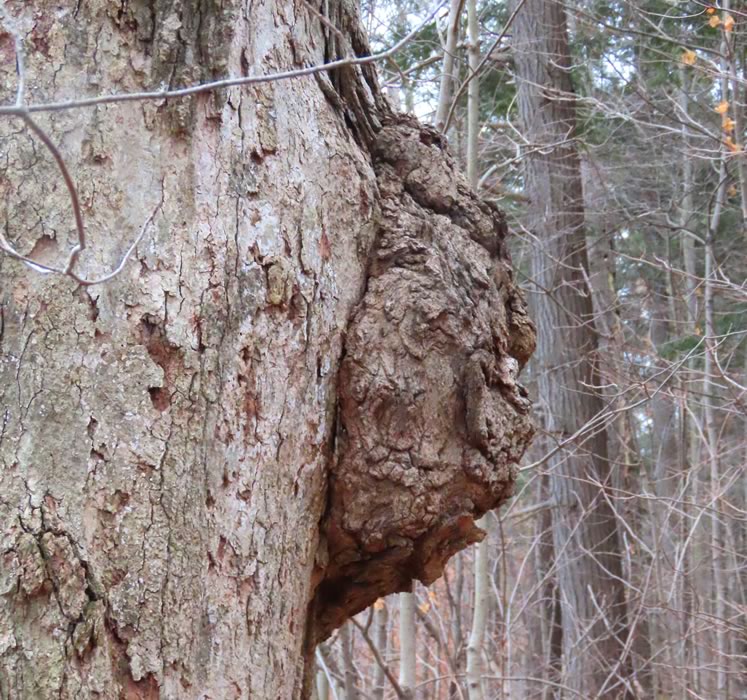
Burls are much sought after by woodworkers. Photo by Don Scallen.

Burl on a red oak. Photo by Don Scallen.
Regardless, these woody tumours are benign. Trees can host multiple burls and still lead long, robust lives. In fact, big old trees gnarled with burls evoke an Ent-like charisma.
Burls are much sought after by woodworkers. Their growth rings swirl and contort in fanciful patterns, and when enhanced by polishing and lacquer, become exquisite works of art. This makes burls valuable, tempting the unscrupulous to harvest them illegally – a serious problem in Californian redwood groves.
Quiet isn’t boring. The winter woods have fascinating stories to share.
Related Stories
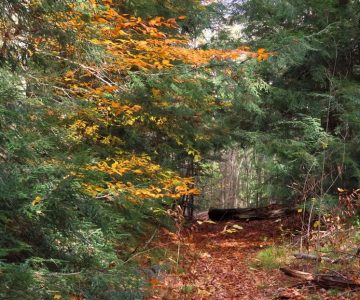
Tree Co-operation
Nov 12, 2019 | | Notes from the WildThe research into the co-operative nature of trees is in its infancy.
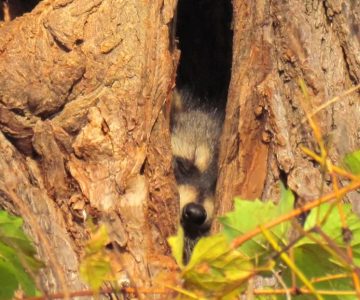
Tree Cavities
Mar 8, 2019 | | Notes from the WildSquirrels, racoons, owls, chickadees, and many other creatures find safety and shelter within trees.
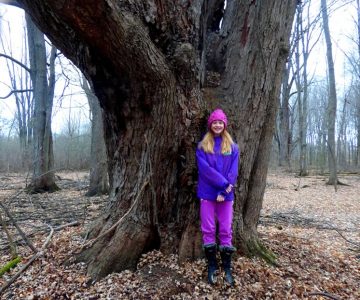
A Headwaters’ Giant
Dec 5, 2017 | | Notes from the WildDo you know of a bigger tree in the Headwaters Region?
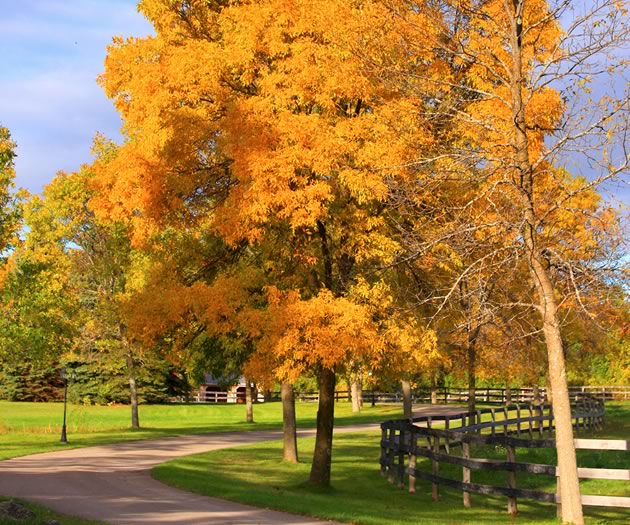
The Beautiful and Damned – Dying Trees
Sep 11, 2015 | | EnvironmentAsh is doomed. Beech and butternut hover on the brink.
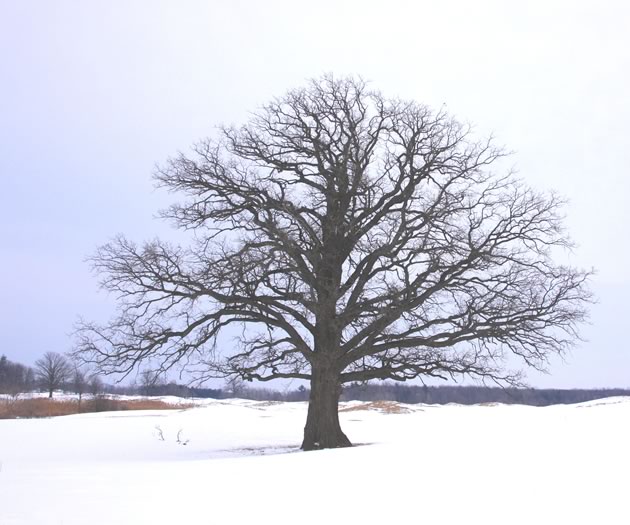
Bur Oaks
Mar 6, 2015 | | Notes from the WildWhy do so many sentinel bur oaks grace farm fields in Caledon and other parts of southern Ontario?
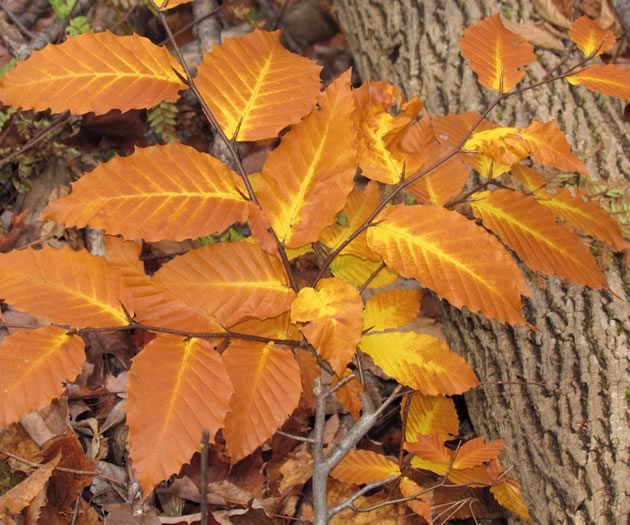
Beech Trees
Dec 10, 2014 | | Notes from the WildBeech trees are being destroyed at heartbreaking speed by an introduced pathogen called beech bark disease.
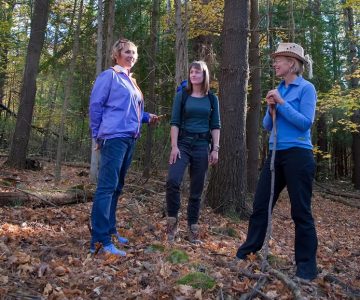
Take a Walk on the Wild Side: Forest Bathing
Mar 26, 2018 | | Good SportSlowing down, tuning in. With forest bathing, the slow movement takes to the woods.
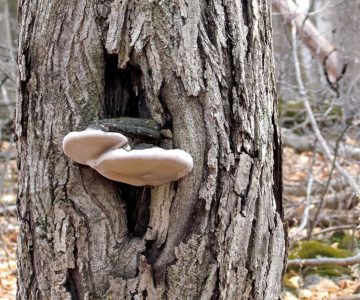
Butternut Canker
Feb 22, 2012 | | Notes from the WildMost of our butternuts are dead or dying, stricken by a fungal disease called butternut canker.






